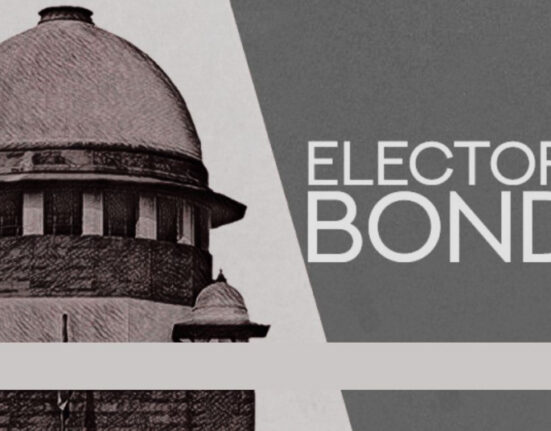Sakkera Rahul, a 3rd-year B.A.LL.B(Hons.) from Dr Ambedkar Global Law Institute Tirupati has written this Article on “The Legislative Relationship between the Centre and State Governments in India: A Comprehensive Analysis”.
Introduction
The relationship between the Centre and State Governments in India is a fundamental aspect of the country’s governance structure. It represents the core of India’s federal system, wherein powers and responsibilities are distributed between the national and regional authorities. The intricate interplay of legislative authority, administrative autonomy, and cooperative mechanisms shapes the functioning of the Indian polity. This article delves into a comprehensive analysis of the relationship between the Centre and State Governments, exploring the constitutional provisions, the division of powers, and the coordination mechanisms that underpin this pivotal aspect of India’s governance model.
India’s federal structure is enshrined in the Constitution, which outlines the specific roles and powers of both the central and State Governments. The distribution of powers is organised through three lists: the Union List, the State List, and the Concurrent List. The Union List contains subjects over which only the Central Government has exclusive legislative authority, such as defence, foreign affairs, and currency. Conversely, the State List includes subjects over which only the State Governments exercise legislative powers, encompassing areas like public health, police, and local government.
This legislative distribution ensures that the central and State Governments have their respective spheres of influence, allowing them to address issues of national and local importance efficiently. The division of powers reflects the principle of cooperative federalism, encouraging collaborative decision-making and fostering a unified approach to governance.
Overall, the relationship between the Centre and State Governments in India is one of cooperation, mutual respect, and collaboration. This cooperative federalism model allows both levels of government to work together towards the collective goal of national progress and development. It upholds the principles of federalism while ensuring effective governance and administration throughout the nation
Constitutional Provisions
The Indian Constitution, enacted on January 26, 1950, lays down the framework for India’s governance and delineates the distribution of legislative powers between the Centre and State Governments. Several constitutional provisions under Part XI define this intricate relationship:
Article 245:
This article establishes the Parliament’s legislative authority and empowers it to make laws for the whole or any part of India. Moreover, It ensures that Parliament has the competence to enact laws on subjects enumerated in the Union List.
Article 246:
Article 246 further clarifies the distribution of legislative powers between the Centre and State Governments. It delineates the three Lists: the union list, the state list, and the concurrent list. The Union List exclusively vests legislative authority in the Parliament, while the State List grants exclusive powers to the State Legislatures. The Concurrent List allows both the central and State Governments to legislate on subjects of mutual interest.
Seventh Schedule:
The Seventh Schedule of the Indian Constitution enumerates the subjects falling under each of the three Lists. The Union List comprises 100 subjects, including defence, foreign affairs, and atomic energy. The State List contains 61 subjects, such as public health, police, and agriculture. Furthermore, The Concurrent List encompasses 52 subjects, including criminal law, bankruptcy, and education.
Article 248:
Article 248 empowers Parliament to legislate on any matter not enumerated in any List, granting it residuary powers. However, in cases of conflict between Central and State laws, the Central law prevails under Article 254.
Article 256:
This article emphasises the need for cooperation between the Centre and State Governments. It mandates that the State governments ensure compliance with the laws made by Parliament and extend assistance to the Central Government in executing its laws.
Article 257:
Article 257 outlines the jurisdiction of the Centre in the States and Union Territories. Moreover, It allows the Central Government to exercise executive authority and power in matters, not within the legislative competence of the State Governments.
Article 263:
Article 263 establishes the Inter-State Council to promote coordination and cooperation between the Centre and State Governments. It aims to address interstate disputes and foster better understanding and communication between the different levels of government.
The legislative relationship between the Centre and State Governments in India is firmly grounded in the constitutional provisions outlined in the Indian Constitution. Furthermore, These provisions clearly define the distribution of legislative powers through the Union List, State List, and Concurrent List. Each level of government is empowered to address issues of national and local importance within its sphere of influence, ensuring a harmonious federal structure. Additionally, various coordination mechanisms, such as the Inter-State Council, promote cooperative federalism and facilitate the resolution of conflicts. By upholding the principles of federalism and cooperative governance, India’s constitutional provisions ensure a robust and unified approach to governance, leading the nation towards progress and development.
Legislative Distribution
The term legislative distribution in India refers to how the power to make laws is divided between the Central Government (Centre) and the State Governments. This division is laid out in the Indian Constitution to ensure a balanced distribution of authority and responsibilities.
The Constitution has three lists that categorise subjects on which laws can be made:
Union List:
This includes subjects on which only the Central Government can legislate. These subjects are of national importance, such as defence, foreign affairs, and currency.
State List:
This contains subjects on which only the State Governments can legislate. These subjects are more region-specific, like police, public health, and local government.
Concurrent List:
This consists of subjects on which both the Central and State Governments can make laws. These subjects cover areas of shared responsibility like education, criminal law, and bankruptcy.
In cases where both the Centre and the States pass laws on a subject from the Concurrent List, the Central law prevails if there’s a conflict between the two. This ensures uniformity and avoids conflicting regulations.
The legislative distribution is a fundamental aspect of India’s federal structure, promoting cooperation and coordination between the Centre and the States. It helps maintain the unity and integrity of the country while allowing flexibility for regional governance and addressing local needs. The judiciary also plays a crucial role in interpreting and ensuring the proper implementation of the legislative distribution, providing checks and balances to safeguard the rights of the citizens and the principles.
Coordination Mechanisms
The legislative relationship between the Centre and State Governments in India is supported by a range of coordination mechanisms that facilitate effective governance and collaboration. These mechanisms are instrumental in ensuring that both levels of government work together harmoniously to address national and regional challenges. Let’s explore these coordination mechanisms in detail:
Inter-State Council:
The Inter-State Council is a significant platform established under Article 263 of the Indian Constitution. It serves as a forum for the Central and State Governments to discuss and deliberate upon matters of mutual interest and resolve disputes or conflicts. Moreover, The council comprises the Prime Minister, Chief Ministers of all States, and Union Territory Administrators. Regular meetings of the Inter-State Council foster open communication, enabling States to voice their concerns and contribute to the formulation of national policies and development plans.
National Development Council (NDC):
The National Development Council plays a crucial role in guiding India’s developmental strategies. It consists of the Prime Minister, Chief Ministers of all States, and Union Territory Administrators. Furthermore, The NDC formulates national plans and policies, ensuring that development efforts are well-coordinated and aligned with the needs and priorities of different States. This coordination mechanism promotes inclusive growth and fosters a sense of collective responsibility among all stakeholders.
Zonal Councils:
Zonal Councils are another essential aspect of India’s coordination mechanisms. They were established under the State Reorganisation Act of 1956 to address regional issues and promote cooperative federalism. Moreover, These Councils comprise the Union Home Minister, Chief Ministers of concerned States, and other members as necessary. The Zonal Councils facilitate inter-state coordination in areas like economic and social planning, infrastructure development, and security. They provide a platform for States to collaborate and collectively address common challenges.
Finance Commission:
The Finance Commission plays a vital role in promoting fiscal federalism by recommending the distribution of financial resources between the Centre and State Governments. Moreover, It ensures that resources are allocated equitably, taking into account the varying needs and developmental requirements of different States. This mechanism enhances financial coordination, ensuring that States have adequate funds to carry out their responsibilities effectively.
Cooperative Federalism:
Cooperative federalism is a guiding principle that emphasises collaborative decision-making and resource sharing between the Centre and State Governments. It promotes a sense of shared responsibility and ensures that both levels of government work together towards the collective goal of national progress and development. Cooperative federalism enhances the efficiency of governance and fosters a spirit of teamwork and unity.
The legislative relationship between the Centre and State Governments in India is bolstered by a comprehensive set of coordination mechanisms. These mechanisms, such as the Inter-State Council, National Development Council, Zonal Councils, and Finance Commission, play a vital role in facilitating effective governance, ensuring coordination, and promoting cooperative federalism. Through these platforms, both the central and State Governments come together to address national and regional challenges, formulate policies, and foster inclusive growth. By upholding the principles of federalism and promoting coordination, these mechanisms contribute to a harmonious and unified governance structure in India.
Conclusion
To conclude, the legislative relationship between the Centre and the States in India is a complex and crucial aspect of the country’s federal structure. The Constitution of India clearly defines the distribution of powers between the two levels of government to maintain balance and ensure effective governance.
The Parliament, as the central legislative body, has the authority to make laws on subjects enumerated in the Union List. On the other hand, the State Legislatures have the power to legislate on matters mentioned in the State List. Concurrent List subjects are shared, and both the Centre and the States can pass laws on these topics, although the Centre’s law prevails in case of a conflict.
The framework of cooperative federalism promotes collaboration and mutual understanding between the centre and the States, emphasising shared decision-making and policy implementation. The Inter-State Council and the Finance Commission play vital roles in fostering coordination and resolving disputes between the two levels of government.
Despite this federal structure, the Centre possesses certain residual powers to maintain the integrity and sovereignty of the nation. Additionally, the President has the power to dissolve a State Legislative Assembly and assume control if a constitutional breakdown occurs.
Over the years, the legislative relationship has evolved, and the Courts have played a crucial role in interpreting the constitutional provisions and resolving disputes. So, the legislative relations between the Centre and the States in India aim to maintain a delicate balance of power, ensuring effective governance and equitable development. It is an ever-evolving process, subject to continuous interpretation and adaptation, crucial for the functioning and growth of the nation as a democratic and federal republic.
Also Read: Powers of the President and the Governor in India: An Analysis, Click Here!
References
- Constitution of India, 1950, art 245.
- Constitution of India, 1950, art 248.
- The Constitution of India, 1950, art 256.
- Constitution of India, 1950, art 257.
- Constitution of India, 1950, art 263.
- “Indian Federalism: How Does the Policy of the Union Affect the States?” by M.P. Singh







Leave feedback about this